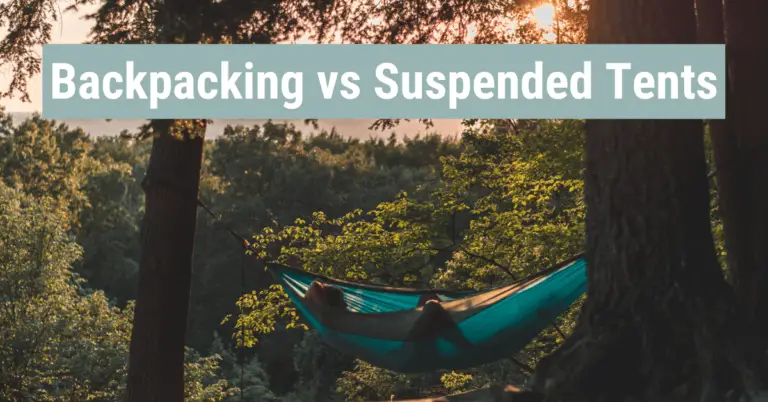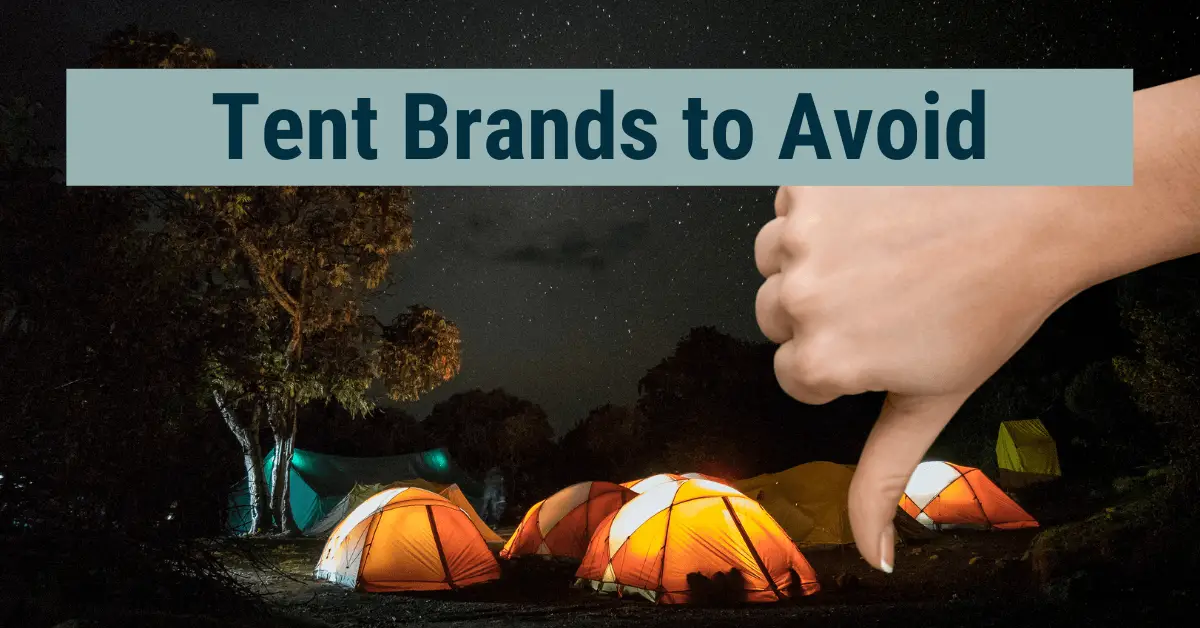When comparing a backpacking tent vs suspended tents, they each offer low-weight options great for traveling campers but are hammock tents right for you?
We’ve broken down the major similarities and differences of common tent types to help you make the right decision for your next outdoor adventure!
Backpacking Tent vs Suspended Tent
First, let’s break down each type of tent:
Major Differences
The biggest difference between a backpacking tent vs suspended tent is the setup. Suspended tents hang from trees or beams to create an enclosed hammock that will protect you from the elements anywhere you can find 2-3 trees. In contrast, backpacking tents intercrossing poles to set up a shelter directly on the ground. Suspended tents are basically hammocks with a rain tarp and backpacking tents are mini versions of traditional tents.
Another difference between these two tent types is the cost. You can find comparable suspended and backpacking tents at the same price between $150 – $300 but you can also find backpacking tents for $1k+. If weight is the most important thing for your camping style and you have the cash to back it up, you can save pounds by opting for the higher-priced backpacking tents.
Both types of tents usually use a two-layer design to repel rain but a backpacking tent may be slightly more comfortable to spend a longer period of time inside during a storm as you can sit inside with more room easily compared to suspended tents. Being off the ground in a suspended tent prevents any kind of rain from pooling below the tent but also exposes you to wind on all four sides which may cause swaying as you hang.
Best Uses For Backpacking & Suspended Tents
While each tent can be used in almost any situation, they both are best for backpacking trips given the small capacities and tent weights. There isn’t anything holding you back from using backpacking and suspended tents for family or car camping but you’ll only be able to fit a couple of people in each one!
Backpacking | Suspended | |
Feature Comparison | Backpacking Tent vs Suspended Tent
Since suspended tents and backpacking tents have similar capacities and purposes, they are very comparable when it comes to their overall features. The primary difference stems from the way the tents form to their environment.
Backpacking tents being on the ground will hold up slightly better in storms (less swaying and strain against the straps/poles) than suspended tents. You’ll still be safe in a suspended tent but the wind on all sides may be less comfortable in the long run.
Product | Backpacking | Suspended |
Sturdiness | ||
Capacity | ||
Cost | ||
Portability | ||
Lifespan |
Want more?
Check out our infographic and larger article covering the ten most common tent types or use our tent finding tool to quickly find the tents that suit your needs!







